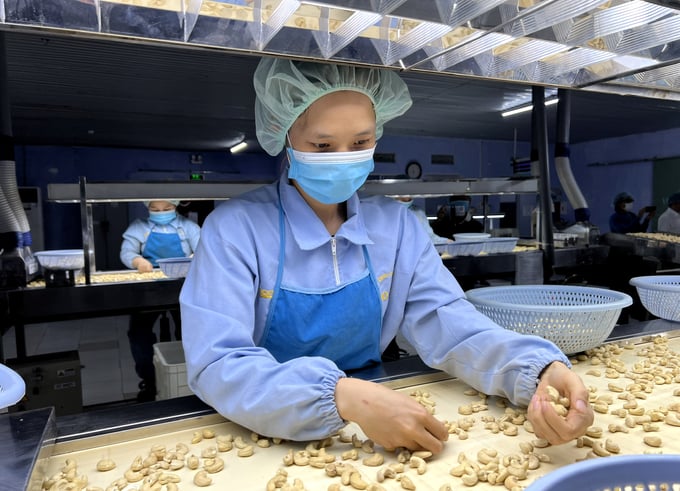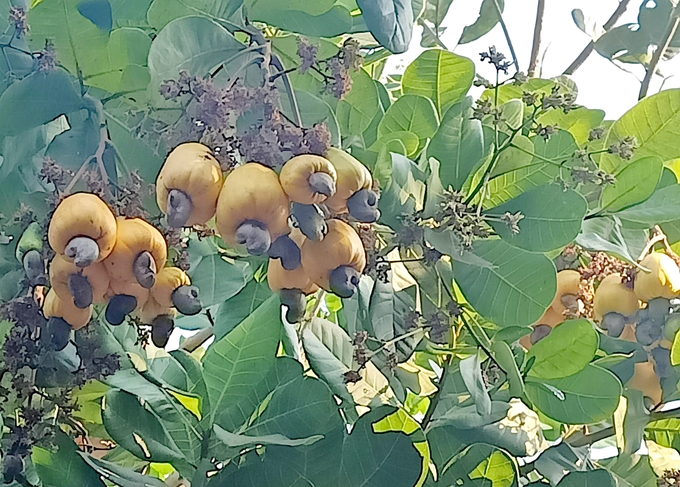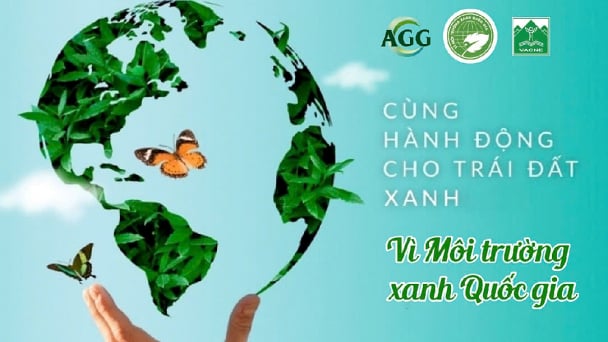May 19, 2025 | 10:27 GMT +7
May 19, 2025 | 10:27 GMT +7
Hotline: 0913.378.918
May 19, 2025 | 10:27 GMT +7
Hotline: 0913.378.918

The processing of cashew kernel for export at Long Son Group. Photo: Son Trang.
After regaining its momentum in 2023, Vietnam's export of cashew continued to experience strong growth in 2024. Namely, cashew exports reached nearly 92 thousand tons within the first two months of 2024, with a total export turnover of 493 million USD. This is an increase of 49% in volume and an increase of 39% in turnover compared to that of the same period in 2023.
A strong growth in the export of cashew at the beginning of the year indicates a rising demand for this commodity. According to Mr. Phung Van Sam, CEO of Hanfimex Binh Phuoc in Phu Rieng district, Binh Phuoc province, the global cashew market is expected to grow by an average of 4.6% between 2022 and 2027. The global trend favoring vegetarian and plant-based diets has inflated demand for various nuts and processed nut products, including cashews. Consequently, the current low prices will stimulate increased cashew consumption. The tourism industry is experiencing a resurgence in growth, particularly with Chinese tourists, which will also drive the consumption of cashew nuts.
However, the export price of cashews continues to decline. Notably, Vietnam's average export price for cashews reached 5,391 USD per ton in January 2024, which is a decrease of 1% from December 2023 and a decrease of 5.7% from January 2023.
According to Vietnamese cashew traders, the price of cashews has exhibited fluctuations over the years, with a downward trajectory being the dominant trend. It currently stands considerably lower than its level five to six years ago. Mr. Phung Van Sam reported that the price of cashews has decreased from 5 USD per pound in 2018 to only 2.35 USD per pound in 2024, marking a decrease of approximately 50% over seven years.
Mr. Ta Quang Huyen, General Director of Hoang Son 1 Joint Stock Company in Binh Phuoc province, believes that oversupply is the reason for the continuous decline in cashew prices from 2018 to 2023, with an average annual decrease of 10%. This is the result of the global supply of raw cashews exceeding the total volume of cashew kernels consumed, preventing cashew prices from recovering. Cashew prices can only begin to level off and recover after the supply diminishes.
Mr. Phung Van Sam noted that in response to the continuous decline in cashew prices, Vietnamese cashew factories have implemented various cost-cutting measures, but they still run the risk of suffering from heavy losses. Consequently, if cashew prices continue to drop, many small factories will have to cease production or declare bankruptcy due to lack of profitability.

The total yield of raw cashew has surpassed 5 million tons globally. Photo: Son Trang.
The continued decrease in cashew prices is prompting commercial banks in Vietnam to exercise caution in expanding financial support to cashew companies in 2024, leading to a reduction in the financial capacity of many cashew factories. These factors will have a noticeable impact on the raw cashew market, given the current abundance of global raw cashew yield and Vietnam's status as the world's largest importer of raw cashews.
Mr. Michael Waring, President of the International Nut & Dried Fruit Council (INC), stated that the global raw cashew yield has increased by 65% over the last ten years, with cashews being the second most produced nut in the world.
According to the Vietnam Cashew Association (Vinacas), the global raw cashew yield reached the 5 million-ton milestone in 2023. It is forecast that this figure will continue to increase by 10 to 15% in 2024. At this level of production, the current processing capacity of Vietnam, India, Brazil, Africa, etc., can potentially meet the demand. However, the cashew kernel market may struggle to maintain its momentum.
With a strong processing capacity, the cashew industry in Vietnam currently accounts for approximately 65% of the global raw cashew imports. Notably, several countries and regions around the world are exporting the majority of their raw cashew yield to Vietnam such as Africa at nearly 80%, and Cambodia. Additionally, Vietnam holds an 80% share of the world's cashew kernel exports.
As a result, Vietnamese cashew traders posited that the current prices of cashew kernels are too low compared to the processing costs at factories. If prices continue to decline, many factories may be forced to cease production due to losses, thereby negatively impacting the global cashew supply chain, from cashew farmers to kernel distributors and retailers.
Translated by Nguyen Hai Long

(VAN) 14 out of 35 domesticated elephants in Dak Lak province have had their living conditions improved, with 11 of them currently participating in the non-riding elephant tourism model.

(VAN) Muong Nhe Nature Reserve hopes that being upgraded to a national park will lay the foundation for forest protection efforts to be carried out in a systematic, modern, and sustainable manner.
/2025/05/16/3923-2-171845_52.jpg)
(VAN) Lower costs, higher yields, and improved soil quality are outstanding benefits that soybeans bring when integrated into the crop rotation system.

(VAN) The 'For a Green National Environment' programme aims to promote a green lifestyle, support businesses in implementing ESG practices, and turn Net Zero commitments into concrete actions.

(VAN) Cold-barn systems efficiently manage environmental and temperature conditions, which aids in the prevention of respiratory diseases in pigs and protects them from the vectors that transmit African swine fevers.

(VAN) To tackle challenges, the project 'Addressing key technical bottlenecks in the grouper supply chain in Vietnam' has been underway since 2024.

(VAN) The project 'Disease-Resilient and Sustainable Cassava Production Systems in the Mekong Region', funded by the Australian Center for International Agricultural Research (ACIAR), is being implemented from 2024 to 2028.